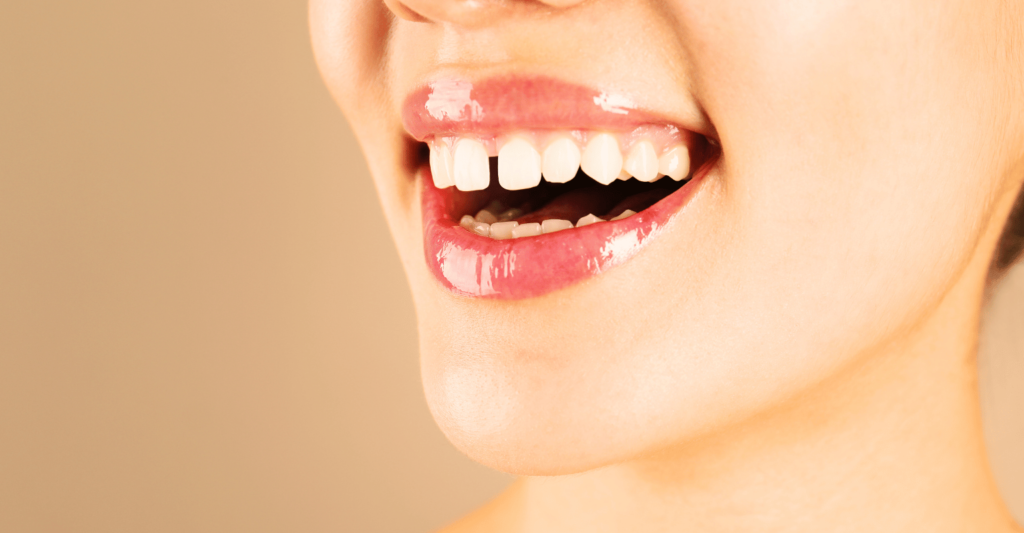
How Do You Know If Your Teeth Are Healthy
Your oral health is crucial to your overall wellness. Healthy teeth are synonymous with a great smile and protect you from a range of health issues, gum disease, and cavities. Good oral hygiene, a balanced diet, and regular dental checkups are key to healthy teeth. How do you know if your teeth are healthy? Here are some pointers for clear signs, self-assessing, and ensuring long-term dental health.
Key Signs Of Healthy Teeth
However, knowing what healthy teeth should look like is essential before you can start caring for them. Teeth in good health also show signs of their overall condition, and keeping them clear of dental issues is just part of the picture.

White And Stain-Free Enamel
The appearance of your enamel is one of the key indicators of healthy teeth. Enamel is the topmost layer of your teeth, and normal enamel should look smooth, white, and stain-free. Although teeth’ natural colour varies from person to person, enamel that has become unusually yellow or stained may indicate a lack of oral hygiene or too much exposure to staining food and beverages.
Maintaining good oral hygiene, such as regular brushing and flossing, is a significant factor in keeping enamel healthy. The fluoride in toothpaste helps strengthen the enamel and protects it against the acids in food, which can erode it.
Firm And Pink Gums
Breakfast is the most common and most important meal of the day. Healthy gums are firm and pink in colour. Healthy gums fit tightly around the bottom of your teeth and don’t bleed when you brush or floss. The first signs of gingivitis, a mild form of gum disease, include swollen, red or bleeding gums; it can progress to worse forms like periodontitis if untreated.
Healthy gums prevent tooth loss and infection, so you must monitor your gum health. If your gums feel soft, swollen, or bleed when you brush, you should either improve your oral hygiene or see your dentist.
No Sensitivity Or Pain
When healthy, teeth should remain painless. You shouldn’t feel sensitivity or pain when eating hot or cold foods. Sensitivity can indicate worn enamel, gum recession, or cavities. Likewise, pain when chewing or biting down may indicate tooth decay, cracks, or something more profound.
If you experience pain when eating or drinking, pay attention to what is causing the pain and go to your dentist for a proper diagnosis.” Healthy teeth should feel at ease while talking, eating , drinking, or engaging in other activities.
Simple Ways To Assess Oral Health
If you’re uncertain about how your teeth and gums are faring, there are easy ways to gauge your oral health. Let’s go through a few ways to assess your dental status at home.
Checking For Gum Health
In the scheme of things, the health of your gums is as vital as the health of your whole mouth. As they support your teeth, you need to ensure your gums remain healthy just as much as your teeth need strength. Here’s how to assess gum health:
Signs Of Healthy Vs. Unhealthy Gums
Pink, firm, swollen and red-free, healthy gums. When you floss, they should not bleed. If your gums are swollen, inflamed or bleed easily, this may be an early sign of gingivitis, which can be treated with good oral hygiene. Tooth loss is a typical result of advanced gum disease, so treating any sign of a gum issue as early as possible is essential.
Use your finger to gently poke your gums or brush near the gumline with your toothbrush to check them. Healthy gums should feel firm when touched and should not bleed. If they do, visit your dentist.
Strength And Durability Of Teet
To gauge your teeth’ strength, consider how well they perform everyday tasks. Healthy teeth are sturdy enough to munch on various foods, from crunchy apples to tougher meats, without pain. They should also resist chipping and not feel weak when pressure is applied.
How To Test If Your Teeth Are Strong
A basic test of tooth strength is trying to bite something more complicated than you’re accustomed to, just a raw carrot. Pain or discomfort in your teeth may indicate weakness from enamel or cavities. Also, if your teeth seem loose or are changing position, it’s a good idea to get to a dentist immediately.

Maintaining Long-Term Dental Health
Now that you know how to evaluate your teeth and gums, it’s time to focus on maintaining oral health long-term. Dental care is essential, but proper care and prevention are the keys to keeping teeth at their best for most of your life.
Daily Oral Hygiene Tips
Maintaining good oral hygiene is key to the long-term health of your teeth. Brushing at least twice daily is vital, as is flossing daily. Toothbrushes and floss clean away food debris and plaque accumulation, which can cause cavities and gum disease.
Choose a fluoride toothpaste that can help strengthen enamel and reduce cavities. (Tip: It is also a good practice to replace your toothbrush every three months or sooner if the bristles get frayed.) If you’re brushing your tongue effectively but still have some buildup, try using a tongue scraper to remove bacteria from your mouth. This helps with bad breath.
Importance Of Regular Dental Checkups
Visiting your dentist regularly is the key to maintaining long-term dental health, even if you practice perfect oral hygiene at your facility. Dentists can also detect specific problems you may not catch, including all types of cavities, for instance, those between teeth or in molar cusp grooves, and the early stages of gum disease.
Most experts advise visiting the dentist at least twice yearly for dental cleanings and exams. During these visits, your dentist will remove any plaque and tartar that might have built up over time and look for early signs of any oral health problems that need to be addressed. Checkups can help you keep your mouth healthy and catch problems before they become serious.
By practising these tips, you can stay ahead of the game regarding oral health. Remember that the healthier your teeth and gums are, the more confident you will feel in your everyday life. Look for the signs of healthy teeth and take action to keep them that way for many years of dental wellness.
Tip To Maintain Oral Health
| Aspect | Healthy Teeth Tips | Gum Health Signs | Strength Indicators | Hygiene Recommendations |
| Enamel Condition | White, smooth, strong | Healthy gums appear pink | Teeth should be firm | Brush twice daily |
| Sensitivity | No pain or discomfort | Gums should not bleed | Strong bite force | Use fluoride toothpaste |
| Gum Health | No swelling or redness | No receding gums | Can handle hard foods | Floss daily |
| Strength & Durability | No chips or cracks | Gums fit tightly around teeth | Teeth should be stable | Avoid acidic foods |
| Regular Checkups | Prevent cavities | Prevent gum disease | Maintain tooth strength | Visit dentist regularly |
FAQs
How can I tell if my teeth are strong?
If your teeth aren’t wiggly, can withstand chips or cracks, and don’t hurt when you chew hard foods, then you know they’re strong. Healthy, strong teeth also have smooth, even enamel without significant staining.
What are the signs of good oral health?
Healthy teeth should be white and stain-free. Healthy gums should be firm and pink without bleeding. There should also be tooth sensitivity or pain. Fresh breath and comfort while eating also indicate a healthy mouth.
How often should I check my teeth’s health?
Your routine means brushing, flossing, and examining your gums and teeth each day. You must also see your dentist for a professional examination at least once every six months.
